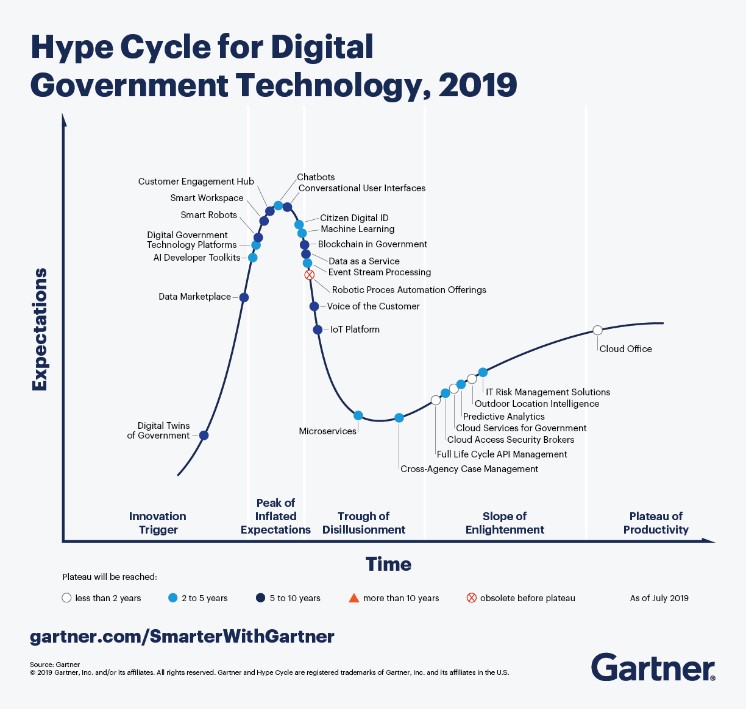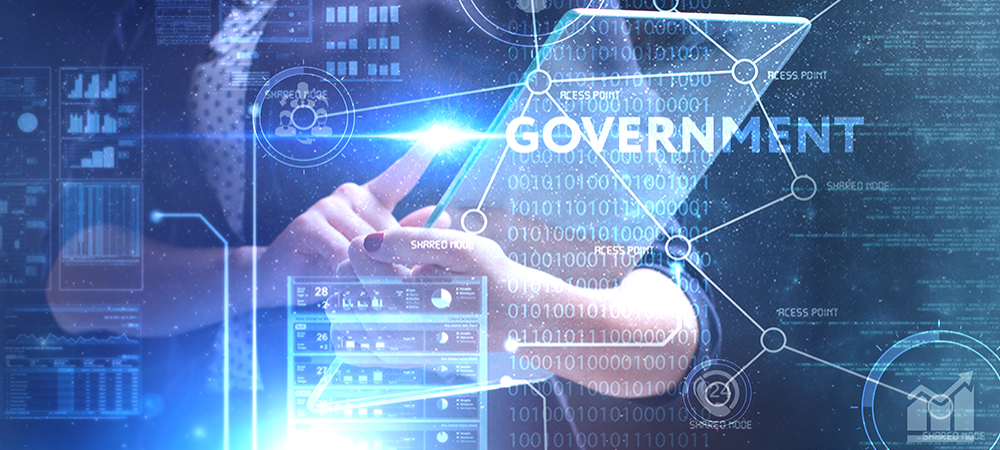Emerging technologies are expected to have a major impact on government organisations over the next five to 10 years. Here we look at five that are predicted to have a transformational benefit in the public sector.
How do you bring a city, transport network or school campus to life so that better decisions can be made about its future? Digital Twins of government that do exactly that are starting to appear in jurisdictions around the globe.
A new addition to the Gartner Hype Cycle for Digital Government Technology this year, Digital Twins of government are models of major systems, such as a road network or a water system, that allow agencies to manage, monitor and maintain them. It’s a trend that’s expected to have a transformational benefit in the public sector within five to 10 years.

“Government CIOs can use this research to gauge relative risk and timing for investment in emerging technologies,” said Alia Mendonsa, Senior Director Analyst, Gartner.
“At the centre of many of these emerging technologies is data. CIOs planning their IT investment strategies should consider leading a concerted data management and governance effort to ensure the success of digital strategies.”
The technologies selected for this year’s Hype Cycle are those most integral to advancing digital government transformation. Government CIOs can use this research to gauge relative risk and timing for investment in emerging technologies.
Place figure 1 here

Here are five of the technologies expected to have the most impact on government organisations over the next five to 10 years.
Chatbots
Sitting at the peak of the Gartner Hype Cycle for Digital Government Technology this year, chatbots will have a significant impact on how citizens interact with government.
A chatbot is a conversational interface that uses an app, messaging platform, social network or chat solution for its conversations. It can be text or voice-based, or a combination of both.
Chatbots are the number one use of Artificial Intelligence (AI) in the enterprise, used in customer service, human resources, IT help desk, self-service, scheduling, enterprise software front ends, and employee productivity and advisory services.
Digital Twins of government
Digital Twins will provide a single interface for awareness and operational control for jurisdictions in the future.
“In the short term, governments should identify a specific proof of concept of a digital twin,” says Bill Finnerty, Senior Director Analyst, Gartner. “In the midterm, governments will use Digital Twins for automated command-and-control operations that will require fewer staff to respond to incidents. Over time, Digital Twins will be used to test scenarios related to policy and legislation. That’s when this technology becomes truly transformative.”
Digital Twins of government need not be a complete clone of the jurisdiction. To start with, they can be a digital manifestation of a single aspect. For example, Digital Twins have been created for water treatment facilities in Sweden and rail stations in China and the UK.
Blockchain
Blockchain has the potential to transform government services by providing a transparent, authoritative record of government transactions and reducing friction between public and private-sector ecosystems. It is likely to transform many government functions, such as identities, voting, public records, procurement and regulatory oversight of supply chain risk.
Seven percent of government organisations have already deployed Blockchain
The Gartner 2019 CIO Survey indicates that 7% of government organisations have already deployed Blockchain or distributed ledger technology, or plan to deploy it within 12 months. In the same survey, 43% of government respondents indicated they had no interest in Blockchain, up from 35% in 2018.
Market hype about Blockchain may have cooled over the past year, but products and services are rapidly evolving. Gartner advises government CIOs to monitor, anticipate and prepare for a Blockchain technology disruption.
Data marketplace
Data marketplaces are interactive platforms for the exchange of data for commercial and social benefit. They create valuable data streams for public and private users and allow data collaboration between government, industry and citizens.
Data marketplaces create an innovation environment for new digital business models. Many CIOs who are working on the vision and execution of Smart Cities will look to monetising their existing open data portals by moving them into data marketplaces.
Smart workspace
A smart workspace exploits the growing digitalisation of physical objects. It involves using technologies, including the Internet of Things (IoT) and AI, to deliver new ways of working, scheduling resources, co-ordinating facility services, sharing information and collaborating.
The benefits of smart workspaces will be diverse, ranging from improved employee productivity and perceptions of the workplace to improved customer experience as employees make better use of smart workspaces to serve clients.
Applications will go beyond productivity improvements to include industry and process specific situations, such as an employee using a digital pen that interacts directly with back-end processing systems or a patient being remotely monitored via a wearable interface in their home to improve care.
Government CIOs will need to work more closely with real estate and facilities teams to enable smart workspaces.



